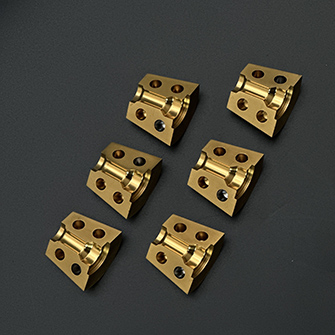A Three-Piece Collapsible Mold is an advanced tool used in the injection molding process, primarily designed for producing complex plastic parts with intricate features, such as undercuts or deep cavities. This mold type consists of three main components that work together to create the desired shape while facilitating efficient part removal. In this article, we will explore the design, functionality, and applications of three-piece Collapsible Molds, highlighting their role in the molding process and distinguishing them from other mold types.

What Is a Three-Piece Collapsible Mold?
A three-piece collapsible mold is typically made of three distinct parts:
1.The Core: This part forms the interior of the molded component and often includes intricate features like cavities or voids.
2.The Cavity: The outer shell of the mold that shapes the external contour of the part. It usually has the exterior features or contours of the part being produced.
3.The Collapsible Part: A special section of the mold, which can collapse or retract during the mold opening phase, facilitating the removal of parts with undercuts or complex geometry.
The collapsible section of the mold is typically designed with mechanical mechanisms (such as springs, pins, or cams) that allow it to shift or collapse inward when the mold is opened. This collapsing action helps to free the part from the mold, reducing the chances of damage or distortion during ejection.
How Does a Three-Piece Collapsible Mold Work?
The working principle of a three-piece collapsible mold follows these steps:
1.Injection: The molding process begins when molten material (often plastic) is injected into the mold cavity, filling all three sections—core, cavity, and collapsible part. The material fills the mold under pressure, and as it cools, it begins to solidify.
2.Cooling and Solidification: After the injection, the mold is kept under cooling conditions to allow the material to solidify and take the shape of the mold. The cooling process is crucial for ensuring dimensional accuracy and stability of the molded part.
3.Collapsing Mechanism Activation: Once the part has cooled sufficiently, the mold is opened. The collapsible section of the mold retracts or shifts to allow the part to be removed without damaging delicate features like undercuts. This is a crucial step, as the collapsible design is what allows the mold to create complex geometries that would otherwise be impossible to remove using a standard two-piece mold.
4.Part Ejection: After the collapsible mold section moves, the part can be safely ejected from the mold. The core and cavity are separated, and the part is released from the mold without distortion or damage, even when complex shapes or internal features are involved.
Key Benefits of Three-Piece Collapsible Molds
1.Production of Complex Geometries: The collapsible section of the mold allows the creation of parts with intricate features such as undercuts, deep cavities, or thin-walled structures. These features would be challenging, if not impossible, to achieve with traditional two-piece molds.
2.Efficient Part Removal: The collapsible design facilitates easier part removal, ensuring that delicate or complex features are not damaged during the ejection phase.
3.Versatility: Three-piece collapsible molds can be used to produce a wide variety of parts, including those in automotive, medical devices, consumer electronics, and aerospace. The ability to create parts with different shapes, sizes, and geometries makes them a versatile option for many industries.
4.Reduced Scrap and Waste: Because these molds are designed to ensure smooth and accurate part removal, the risk of part defects, deformation, or scrap is reduced, leading to cost savings and higher production yields.
5.Improved Mold Lifespan: The ability of the collapsible section to retract reduces the stress and wear on the mold components, extending its lifespan and reducing maintenance costs over time.
How Does a Three-Piece Collapsible Mold Differ from Other Mold Types?
While traditional two-piece molds are the most common choice for simple parts, three-piece collapsible molds offer distinct advantages when it comes to complex geometries. Here’s a comparison:
1.Two-Piece Molds: Typically, two-piece molds have a fixed core and cavity, making them suitable for simple parts with no undercuts or intricate details. Removing the part requires the mold to open fully, and if there are undercuts, extra features such as sliders or lifters must be added.
2.Three-Piece Collapsible Molds: Unlike two-piece molds, three-piece molds include a collapsible part that moves during mold opening, allowing for the production of parts with complex features. This mold type is ideal for parts that require intricate geometries, such as automotive interior panels, medical device components, and parts with hollow structures.
In comparison to other advanced mold types (e.g., rotational molds or die-casting molds), three-piece collapsible molds are especially advantageous for producing parts using injection molding, where precision and flexibility are required, and where the material’s thermal and mechanical properties are paramount.
Applications of Three-Piece Collapsible Molds
Three-piece collapsible molds are widely used in industries that require precision, high complexity, and versatility. Some key applications include:
1.Automotive Industry: Parts like dashboard components, internal engine parts, or body panels with intricate features are often produced using three-piece collapsible molds.
2.Medical Devices: Molds for creating surgical instruments, medical packaging, or diagnostic equipment often rely on this type of mold for their precise, complex shapes.
3.Consumer Electronics: Three-piece molds are used to create parts for devices such as smartphones, tablets, and wearable technology, where undercuts and detailed features are essential for functionality and aesthetics.
4.Aerospace: Components for aircraft and satellites, such as interior panels and lightweight structural parts, benefit from the mold’s ability to create complex and lightweight geometries.
A three-piece collapsible mold is an essential tool for the production of intricate parts that require precision and flexibility. Its unique design allows manufacturers to create complex shapes with undercuts and deep cavities, all while ensuring smooth part removal. This makes three-piece collapsible molds an indispensable asset in industries such as automotive, aerospace, electronics, and medical devices, where high-quality, complex parts are needed to meet stringent standards. By offering enhanced functionality, versatility, and precision, these molds are a powerful solution for manufacturers looking to achieve the highest performance in their molding processes.











